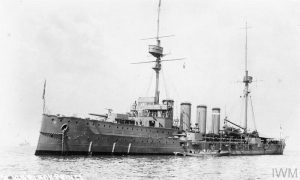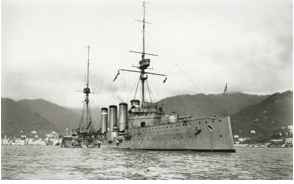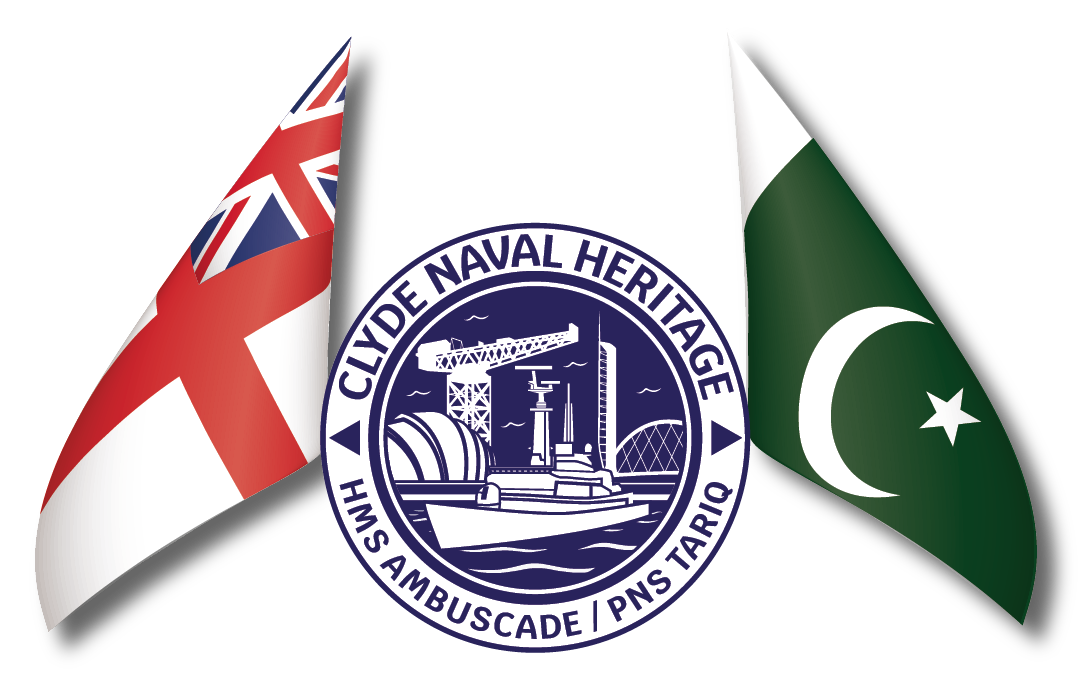HMS Black Prince was a name shared by several British Royal Navy vessels, but one of the most notable was the armoured cruiser built on the River Clyde in the early 20th century. She played a significant role in naval operations during World War I and met a tragic fate during the Battle of Jutland.
Construction on the Clyde
Origins and Design (1902-1904)
HMS Black Prince was ordered as part of the 1902 naval expansion plan, which aimed to modernize the Royal Navy’s fleet of armoured cruisers. She was the second ship in the Duke of Edinburgh class, named after Edward, the Black Prince, a medieval English military leader. These ships were intended to serve as long-range cruisers capable of protecting British merchant fleets and enforcing naval supremacy.
HMS Black Prince was built by the renowned shipbuilding company John Brown & Company, located on the Clydebank, one of the most famous shipyards in the world. The vessel’s keel was laid down in 1902, and she was launched on 8 November 1904. John Brown’s expertise ensured that the ship was built to the highest standards of the time, incorporating heavy armour, new steam turbine technology, and a formidable array of weaponry.
Specifications:
Length: 505 feet (154 meters)
Displacement: 12,590 tons
Armament: Two 9.2-inch (234 mm) main guns, ten 6-inch (152 mm) secondary guns, and smaller quick-firing weapons for close defence.
Armour: The belt armour was up to 6 inches thick, offering protection against enemy fire, while the deck, turrets, and conning tower were similarly armoured.
Engineering Marvels
HMS Black Prince was powered by coal-fired steam engines driving twin screws, which allowed her to reach a top speed of 23 knots. This speed, combined with her long-range capabilities, made her an ideal vessel for patrolling the Empire’s vast oceans.
Early Service: Pre-War Activities (1906-1914)
Commissioning and Early Deployment
HMS Black Prince was commissioned into the Royal Navy on 17 March 1906. In her early years, she served with the Mediterranean Fleet, performing a variety of roles, from patrolling British interests in the Mediterranean to participating in naval exercises and goodwill visits to foreign ports.

Role in Naval Exercises
During her peacetime service, the Black Prince participated in several large-scale naval exercises aimed at testing the Royal Navy’s ability to mobilize and coordinate its fleet. These exercises were critical in refining British naval tactics, particularly the use of armoured cruisers in fleet actions and long-distance patrols. Black Prince was often paired with her sister ship, HMS Duke of Edinburgh, during these operations.
Technological Upgrades
In the years leading up to World War I, HMS Black Prince underwent various minor upgrades, including the installation of wireless telegraphy (radio) equipment, which was becoming essential for communication in modern naval warfare. These enhancements allowed her to stay relevant as the world’s naval technology evolved.
World War I and the Battle of Jutland (1914-1916)
Outbreak of War and Early Actions
With the outbreak of World War I in August 1914, HMS Black Prince was assigned to the Grand Fleet and initially took part in patrolling the North Sea, seeking out German warships and protecting British waters. The Black Prince was a key part of the armoured cruiser squadron, performing duties that included convoy escort, reconnaissance, and fleet support.
Role in the Battle of Jutland (1916)
The Battle of Jutland, fought between 31 May and 1 June 1916, was the largest naval battle of World War I and involved the British Grand Fleet clashing with the German High Seas Fleet. HMS Black Prince was part of the First Cruiser Squadron, which was commanded by Rear-Admiral Sir Robert Arbuthnot.
During the chaotic night engagements on 31 May, HMS Black Prince became separated from the rest of the fleet. In the early hours of 1 June, she strayed into the path of the German battleships. Caught by surprise and outgunned, HMS Black Prince was illuminated by searchlights and came under a devastating barrage of fire. The German battleship Thüringen, along with other German ships, opened fire, hitting Black Prince with several large-calibre shells.
Within a few minutes, HMS Black Prince was torn apart by explosions. It is believed that her magazines detonated, and the ship sank with all hands, killing approximately 857 officers and men. Her loss was part of the tragic British casualties in what would become one of the most controversial and debated naval battles in history.

Legacy and Impact
Strategic Lessons from Jutland
The destruction of HMS Black Prince highlighted the vulnerabilities of armoured cruisers in modern naval warfare. While they had once been the pride of the fleet, the increasing power of naval artillery and the rise of the dreadnought battleship rendered them increasingly obsolete. The Black Prince and her sisters were built for a previous era of naval warfare, and their limitations were laid bare at Jutland.
Memorials and Tributes
The crew of HMS Black Prince is commemorated at the Portsmouth Naval Memorial, which honours the British sailors who died at sea with no known graves. The ship’s loss, along with that of other cruisers at Jutland, became a symbol of the sacrifice made by the Royal Navy during World War I.
The End of the Armoured Cruiser Era
The fate of HMS Black Prince and other armoured cruisers at Jutland signalled the end of the armoured cruiser as a significant naval asset. In the years following the battle, the Royal Navy and other major naval powers shifted their focus to building more heavily armoured and faster ships like battlecruisers and dreadnoughts.

